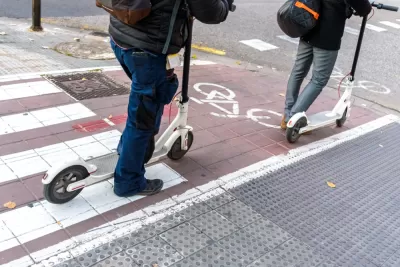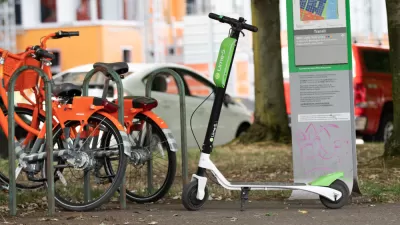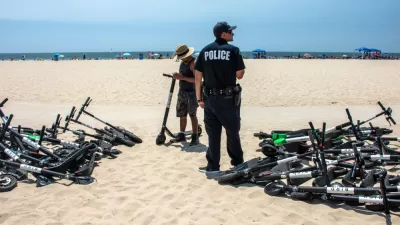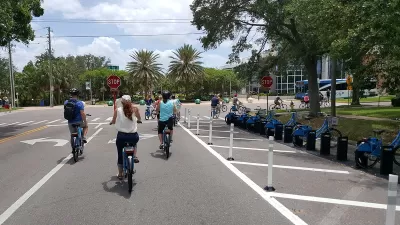New data from National Association of City Transportation Officials (NACTO) shows the number of rides on electric scooters and shared bikes rising by 60 percent between 2018 and 2019.

"Shared bikes and e-scooters saw 136 million trips in 2019, up 60% from 2018, according to new figures released by the National Association of City Transportation Officials (NACTO)," reports Chris Teale.
Of those trips, most were short. In 2019, micromobility trips averaged between 11 and 12 minutes and 1 to 1.5 miles in distance. "The organization said those figures are key as 35% of car trips in the U.S. are less than 2 miles, so shifting more trips to bikes and scooters could help ease issues like congestion, road safety and emissions," according to Teal.
Like every other transportation mode, micromoblility ridership has declined dramatically during the pandemic, so similar numbers won't be possible. But, as made clear an article explaining the findings of the new report posted on the organization's website, NACTO believes that microbobility will outlast the pandemic with continued support from local and state governments.
Over the past decade, and especially in 2020, we’ve also seen that the most successful systems are the ones where there is strong, reliable partnership between the city and operator. These partnerships create and support equitable distribution requirements, free and reduced fees for essential workers, and general system reliability, and other policies that are essential to meet city health, equity, mobility, sustainability, and resilience goals.
FULL STORY: Micromobility 'here to stay' despite COVID setbacks: NACTO

Alabama: Trump Terminates Settlements for Black Communities Harmed By Raw Sewage
Trump deemed the landmark civil rights agreement “illegal DEI and environmental justice policy.”

Planetizen Federal Action Tracker
A weekly monitor of how Trump’s orders and actions are impacting planners and planning in America.

Why Should We Subsidize Public Transportation?
Many public transit agencies face financial stress due to rising costs, declining fare revenue, and declining subsidies. Transit advocates must provide a strong business case for increasing public transit funding.

Understanding Road Diets
An explainer from Momentum highlights the advantages of reducing vehicle lanes in favor of more bike, transit, and pedestrian infrastructure.

New California Law Regulates Warehouse Pollution
A new law tightens building and emissions regulations for large distribution warehouses to mitigate air pollution and traffic in surrounding communities.

Phoenix Announces Opening Date for Light Rail Extension
The South Central extension will connect South Phoenix to downtown and other major hubs starting on June 7.
Urban Design for Planners 1: Software Tools
This six-course series explores essential urban design concepts using open source software and equips planners with the tools they need to participate fully in the urban design process.
Planning for Universal Design
Learn the tools for implementing Universal Design in planning regulations.
Caltrans
Smith Gee Studio
Institute for Housing and Urban Development Studies (IHS)
City of Grandview
Harvard GSD Executive Education
Toledo-Lucas County Plan Commissions
Salt Lake City
NYU Wagner Graduate School of Public Service





























